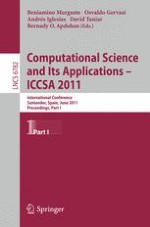The five-volume set LNCS 6782 - 6786 constitutes the refereed proceedings of the International Conference on Computational Science and Its Applications, ICCSA 2011, held in Santander, Spain, in June 2011. The five volumes contain papers presenting a wealth of original research results in the field of computational science, from foundational issues in computer science and mathematics to advanced applications in virtually all sciences making use of computational techniques. The topics of the fully refereed papers are structured according to the five major conference themes: geographical analysis, urban modeling, spatial statistics; cities, technologies and planning; computational geometry and applications; computer aided modeling, simulation, and analysis; and mobile communications.
